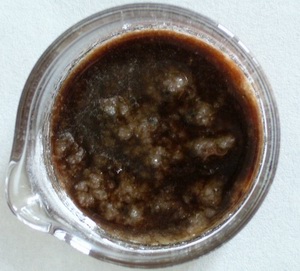|
||||||||||
The experiment takes approximately 5 minutes. |
||
Wet a portion of β-cyclodextrin in a glass beaker with some water and then add a few milliliters of concentrated sulfuric acid (fume cupboard!). The white β-cyclodextrin turns yellowish initially and then black. The beaker becomes hot, and a dark brown to black substance forms. |
||
|
||
The extremely hygroscopic sulfuric acid dehydrates β-cyclodextrin. Since cyclodextrins are carbohydrates, the dehydration product is carbon. |
||
As with the experiment on thermal decomposition, the behavior of β-cyclodextrin can be compared with the reaction of household sugar and starch. |
||
This experiment, as with the experiment on thermal decomposition, serves only to demonstrate that cyclodextrins are carbohydrates. For further information on the molecular structure of cyclodextrins, look at the production from the raw material, corn starch. |
||
| Tausch, M.; von Wachtendonk, M.; Chemie 2000+ Band 1, C.C. Buchners Verlag Bamberg, 2001, S. 104 | ||
